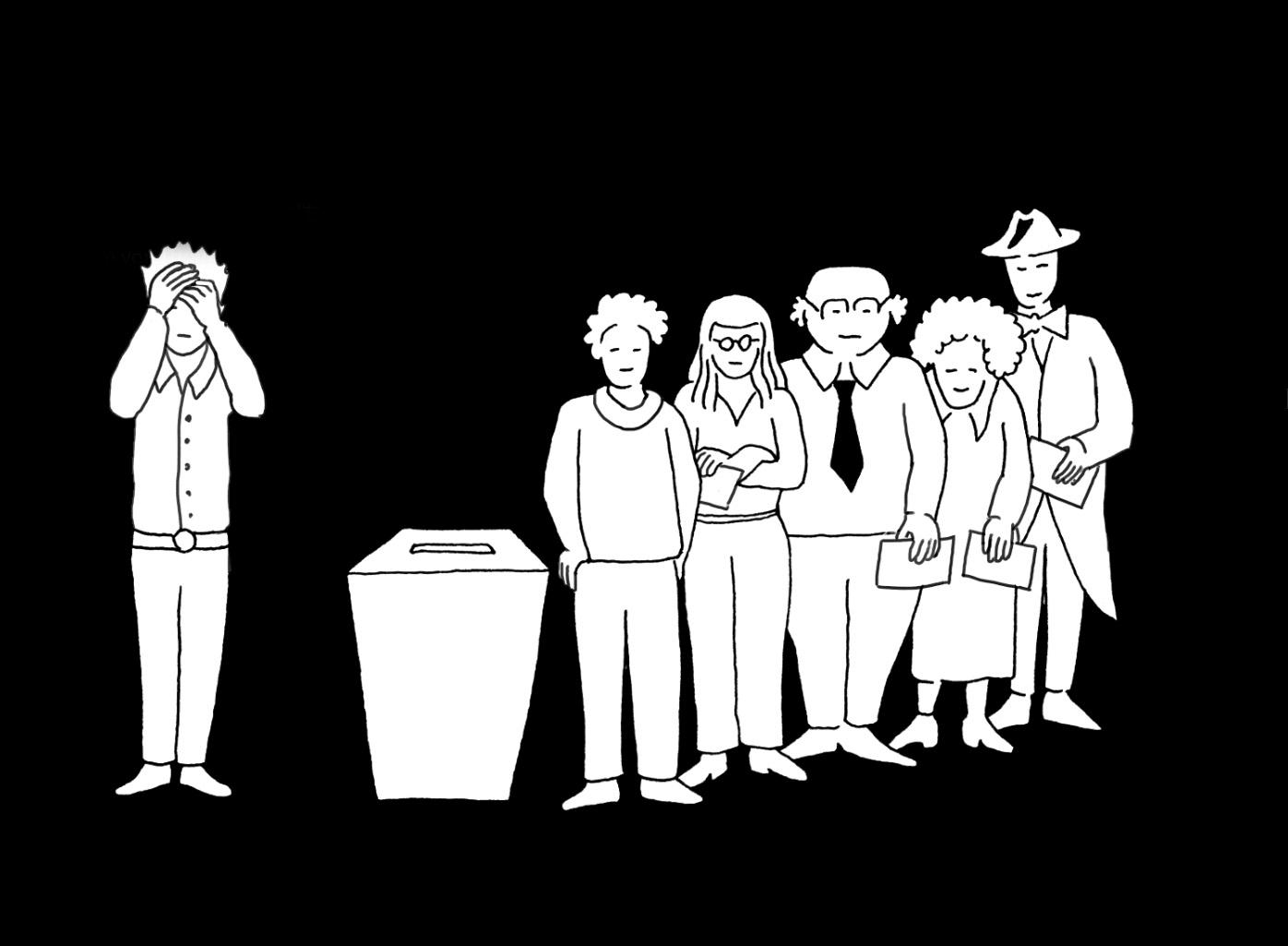Political parties driving force behind initiatives

Inheritance tax reform, energy tax instead of value-added tax, family initiative, Ecopop – this is only a small selection of people’s initiatives that voters decided on over the last 12 months. At the same time, voices have become louder warning against a flood of initiatives or even lamenting the misuse of direct democracy.
The number of submitted initiatives has neither skyrocketed nor is the increase a coincidence as an analysis found. However, there are good reasons why the use of direct democracy is on the rise.
Since the beginning of 2014, the Swiss citizens have had the final say on 13 initiatives. This is a lot compared to 50 years ago, when less than one initiative was voted on per year.
Almost 100 years ago, voters decided on two initiatives on average in a year.
Three different phases

The initiatives that have been launched over the past 95 years can be roughly divided into three different phases.
• An initial, very short phase from 1920 to 1925. During this first period, two to three initiatives were submitted per year.
• A second phase from 1925 to 1970. During this phase, fewer than one initiative was put forward per year on average.
• The last phase covers the years from 1970 up until today. After 1970, the number of initiatives surged to an average of more than three per year.
The three different phases originate from the fundamental changes in our political environment.
Increased competition between the parties as well as lower hurdles for the collection of signatures are the most important factors explaining the rise in initiatives launched over time.
Hurdles
The statistical analysis over time indicates that the easier it was to collect the necessary signatures, the more initiatives were launched.
In 1920, the required 50,000 signatures equalled almost 6% of the population eligible to vote. Even though today at least 100,000 valid signatures are needed, this accounts for less than 2% of the electorate only.
The analysis also shows that in the years prior to elections and in election years themselves the number of submitted initiatives usually rises significantly.
Party competition has also strongly increased over the years. Today the parties’ share of the vote changes much more from election to election in the different cantons than 95 years ago.
It is interesting to note that along with the increasingly fierce competition between political parties, the number of new initiatives has also risen.
But why should stronger competition between parties lead to more initiatives? Or let’s put it like this: why are parties so keen on initiatives?
Keen on initiatives
Politicians rely on initiatives not only to draw attention to the issues they are concerned with, but also to attract the media spotlight.
A distinct profile can be crucial for parties, and having a key issue certainly helps to create such a distinct profile. The Swiss People’s Party is a prime example gaining in popularity by launching various foreigner-related proposals.
The electorate rewarded the party’s consistent tactic by gradually increasing its support from election to election.
Tougher competition has also led to more and more party politicians becoming members of initiative committees.
A detailed analysis of all submitted people’s initiatives since 1920 shows that the surge in initiatives is primarily down to party politicians, whereby civil society is only responsible for a small share of the increase.
Cultural or social issues
Political positions can be shown in a map-like chart. The West-East axis represents the economic dimension; the North-South axis represents the cultural dimension.
The economic axis is the dominant dimension, whose significance has not changed – it divides the parties according to their positions on the issue of wealth distribution in society.
Those on the left (in the West) tend to favour state interventions in markets and redistribution. This is opposed to the position represented by those on the right (in the East).
The second dimension (North-South axis) is the cultural as well as socio-political axis. It covers various issues from environmental protection to European relations and policies on foreigners.
These issues vary in their relevance. However, usually these policy areas allow parties to be creative and tackle new issues.
If all new initiatives are analysed on whether they concern more the redistribution or cultural axis, the picture becomes clear: the increase in launched initiatives is not due to economic issues.
In essence, more and more socio-political battles are now fought out at the polls in Switzerland.
The views expressed in this article are solely those of the author, and do not necessarily reflect the views of swissinfo.ch. The text is a slightly adapted version that was first published by the online platform for political and social sciences, DeFactoExternal link. It is based on a paper in the Swiss Political Science ReviewExternal link.
Translated from German by Billi Bierling

In compliance with the JTI standards
More: SWI swissinfo.ch certified by the Journalism Trust Initiative














You can find an overview of ongoing debates with our journalists here . Please join us!
If you want to start a conversation about a topic raised in this article or want to report factual errors, email us at english@swissinfo.ch.